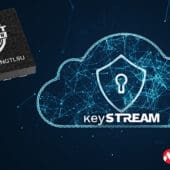Car: Héctor Tejero – Arrow Electronics
Introduction
The goal of secure supply chains is to ensure the integrity, confidentiality and authenticity of goods, services, information and resources throughout the entire supply chain process. That is, protecting the supply chain from various risks and security threats that could compromise the security, integrity and reliability of the products or services offered to customers. The security of supply chains is crucial because they are made up of complex networks involving multiple agents. Any weak link in the chain can create opportunities for hostile actors to exploit vulnerabilities and introduce counterfeit, substandard or malicious components, or compromise the integrity of the supply chain.
The Allianz Risk Barometer 2023 report [1] shows that business and supply chain disruption is the second most important risk (34%). It is second only to cybersecurity incidents (also at 34%), reflecting the vital importance of protecting today's digital economy. The same report shows that companies have begun to diversify their businesses and supply chains, as well as intensify risk management. Despite these advances, there is still much work to be done to improve supply chain transparency, provide good quality data and engage with relevant stakeholders to obtain it.
Best practices for a secure supply chain
There are a number of best practices that contribute to a holistic and effective approach to supply chain security, including:
Risk management and resilience planning
Proactive risk management and resilience planning are vital elements of secure supply chains. That is, identifying and assessing potential risks and vulnerabilities within the supply chain, including physical, operational and cybersecurity risks. Companies can achieve this by continually monitoring and auditing the supply chain to identify and prioritize potential security vulnerabilities or deficiencies. Maintaining a record of these potential risks and implementing contingency measures consistent with the priority of the risks helps the supply chain recover from disruptions more effectively. The goal is to manage cybersecurity risks and protect against data breaches, ransomware attacks, and other cyber incidents.
Vendor management
A supplier management policy with clear criteria for selecting and managing suppliers based on their security practices and reliability improves the strength of the supply chain. This may involve conducting due diligence, audits and assessments of suppliers' security controls and procedures. Secure supply chains protect sensitive information and data, including customer information, proprietary designs, financial records, and trade secrets, from unauthorized access, use, disclosure, alteration, or destruction. Collaborating with secure and reputable vendors and suppliers is crucial to maintaining security practices throughout the supply chain ecosystem.
Protection of intellectual property
Intellectual property (IP) protection is crucial for organizations that have created original works, inventions or innovations. They rely on their supply chains to safeguard this intellectual property (IP) and prevent unauthorized access to or theft of designs, technologies or innovations. Secure supply chains apply measures to prevent counterfeiting and cloning of products and detect tampering during transport or storage.
Physical security
An adequate level of physical security protects physical infrastructure and supply chain assets, including manufacturing facilities, warehouses, and distribution centers. Implementing this level of security may involve access controls, surveillance systems, security personnel and other appropriate measures to prevent unauthorized access, theft or tampering.
Training
Security solutions must be approached holistically, extending beyond technology to people and processes. It is vital to train supply chain employees on security risks, best practices, and their roles and responsibilities. Regular training programs increase awareness and promote a culture of safety throughout the organization.
Taking advantage of new technologies
Exploring and leveraging emerging technologies can improve supply chain security. For example, blockchain technology can provide transparency and traceability, while Internet of Things (IoT) devices can monitor and track goods throughout the supply chain.
Regulatory Compliance
Compliance with relevant laws and regulations is essential for supply chain security. Depending on the industry and geographic location, organizations may need to adhere to specific data protection regulations, industry standards, or international trade requirements. These requirements include data protection laws, export regulations and sector-specific compliance requirements.

Conclusion
Supply chain security is a multidimensional challenge that requires collaboration and coordination of all interested parties. This is a continuous process that requires constant monitoring, evaluation and improvement to adapt to evolving threats and maintain security and resilience. A secure supply chain gives customers confidence that the products or services delivered are authentic, secure and free from malicious tampering or alteration.
A comprehensive supply chain security practice enables organizations to establish trust, reduces the risk of security breaches or incidents, and maintains the reliability and reputation of their supply chains. This approach is essential to protect the interests of a company and safeguard the interests of customers and other stakeholders in the supply chain network.[1] Allianz Risk Barometer 2023 “Identifying the best business risks for 2023”
This is the fifth in a series of articles from Arrow Electronics exploring the desirable characteristics of secure connected systems.








